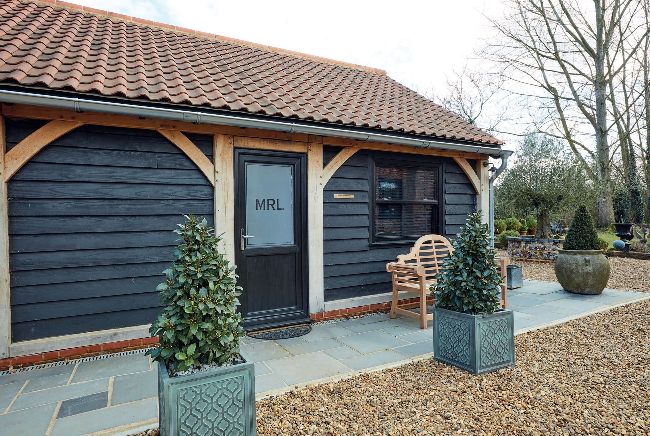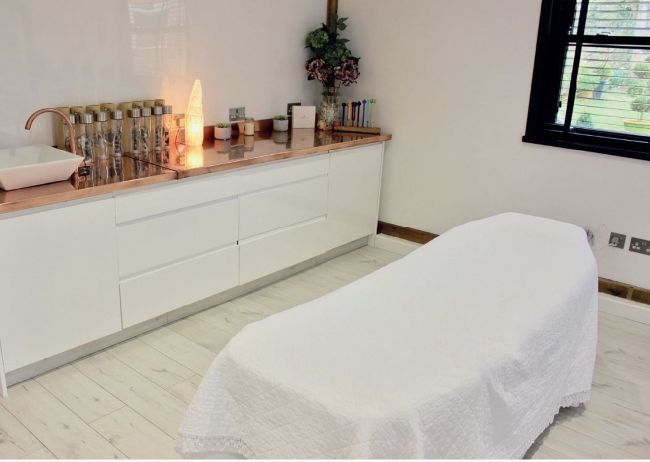Interview
Talking to… MARIE Reynolds
The celebrity facialist tells Eve Oxberry why salons and spas need to take a more holistic approach to client consultations, and how distance therapies could help futureproof your income
While many practitioners in the industry began experimenting with online consultations earlier this year during lockdown, celebrity holistic therapist Marie Reynolds was ahead of the curve. “I’ve always done online consultations and distance therapies. So, I wasn’t able to physically do hands-on treatments during lockdown but that didn’t stop me advising clients and giving them an avenue in how to treat the skin holistically from within,” she says.
Over recent years, Reynolds has carved a niche as the go-to holistic therapist for consumer press, known for her unique way of reading the client during consultation and the diverse blend of modalities she uses in her treatments. “I’m not just a skin therapist; my background is in fascia and health, homoeopathy and biochemical medicine, so it’s all about operating with these different modalities and understanding how what you see on the skin comes from imbalances within,” she adds.
Having treated many famous faces during her residency at Fortnum & Mason in London, Reynolds now works predominantly from her Norfolk clinic or via distance therapies online.
In the mix
Reynolds puts her success, in part, down to her “maverick stance” on treating the skin. Not a believer in skin types or conditions, she says diet and lifestyle factors are responsible for the majority of skin issues and places huge importance on the consultation in order to get to the root cause of what is manifesting on the skin.
“I also look at how a person is talking. If they’re talking really fast, breathing from the upper chest, or twiddling their hands then that can indicate anxiety or stress, which can link in with certain sensitivities,” she says. “I sometimes ask to look at their feet; I look at whether their toes twist in because you can tell whether someone has been dragged into the world by C-section or with forceps. You can also look at the shapes of the ears to tell different things. It’s about joining the dots rather than just listening to what they tell you verbally.”

Reynolds says too many salons and therapists still “go through the motions” when approaching a treatment and believes a more individualised approach to beauty therapy needs to be taught in colleges. “Therapists need to get out of this pigeonhole mindset of ‘this morning, I’m going to do nails, then I’m going to do a facial, then I’m going to do a back massage’ and start thinking about the holistic point of view every time you see a client,” she says. “Because what you are treating in the skin or the body is influenced by diet and lifestyle, but also by thought processes and stress. What you think and how you feel create chemical messengers that link to physical imbalances.”
Reynolds also blames the classic consultation card, and its tick-box approach, adding, “We’re all taught to ask about contraindications for safety, then after that, therapists often give their clients a form to fill in while they’re getting the treatment room ready, but it’s a missed opportunity. On a card, your client will only tell you what she wants you to know but it’s really important to understand the truth about the food they eat and how often they go to the toilet. A lot of therapists get embarrassed and think, ‘should I ask that? Am I crossing a line?’. But at the end of the day, your client is there to get a result. You have to find out the answers.”
She cites the rise in cases of rosacea as a prime example, suggesting that, for many clients, this may have been caused or exacerbated by poor eating and sleeping habits during lockdown. “At night, your digestive enzymes slow down so if, for example, you’re eating at 9pm, that food is sitting in your stomach. It increases the acidity and it ferments,” she says. “All of these things come out in your skin, and rosacea is one of the biggest issues that have to do with the gut, it’s all about the elimination organs, so it’s really important you ask these questions.”
Read up
For those therapists who want to transition to a more holistic way of working but don’t feel confident stepping outside of their usual protocols, Reynolds suggests there’s never been a better time to broaden your horizons, by taking advantage of all the free education that’s been posted online during lockdown.
“Everybody has come online; there have been loads of Instagram Lives and webinars, so be a magpie and start collecting all these little snippets,” she says. “Nichola Joss did a demo of facial massage, for example, and clients love that; plus there’s a shedload of information on my blog too so read that. Follow naturopaths, holistic therapists and aesthetic specialists, and start building up a profile of what you want to ask your client.”

This page and next page: Marie Reynolds’ Norfolk clinic
Reynolds is well aware that many therapists feel unsure about overstepping the mark and moving into territory that could be considered medical but says that this kind of holistic approach doesn’t have to mean prescribing. “You’re not diagnosing anything and you’re not telling people to take any tablets; what you’re doing is building up a profile of why they might be struggling to sleep or be experiencing sensitivity, so you can say, ‘well, you might need to look at avoiding dairy and introducing a probiotic’, for example,” she says.
While Reynolds already uses a diverse blend of ingredients and practices in her own treatments, she too is always learning and looking out for new methods to incorporate. “I’m doing a lot at the moment with biophoton therapy and infrared - so, using different frequencies that have the same light as our cells,” she says.
“The other thing that’s exciting me now is colon hydrotherapy so I’m going to be introducing my own version. This won’t just be using water to flush everything out; I’ll be using blends of my supplements with it and I’ll also be able to imprint the water to address different energetic imbalances.”
KEY DATES
1988
Marie Reynolds qualifies in beauty therapy and starts practising
2011
Launches the Marie Reynolds London brand with candles
2014
Begins her residency in London’s Fortnum & Mason
2018
Opens her Norfolk clinic MRL and launches her first products
2019
Expands with the launch of supplements range
2020
Develops personalised colonic hydrotherapy and develops distance therapies
Trend spot
Another passion for Reynolds at the moment is educating clients on the possible effects of electrosmog. “We know that blue light has an effect on melatonin but actually it’s the electrosmog that’s the problem,” she says. “Your smartphone emits microwaves and radio waves that interfere with energy and rest. If your client suffers with poor sleep, get them to take all electricals out of the bedroom and make sure that switches either side of the bed are turned off. If you’re lying on a coil-sprung mattress with any metal in it, that could potentially act as a conductor for that electrosmog.”
With this type of lifestyle advice, which could be relatable for most clients, Reynolds advises reading up on as much research as you can then picking the areas that resonate with you.
“I think it definitely comes with experience because you could be the most educated, confident therapist but you need to develop that intuitive touch and create your own USP - that is what brings your clients back time and time again,” she says. PB